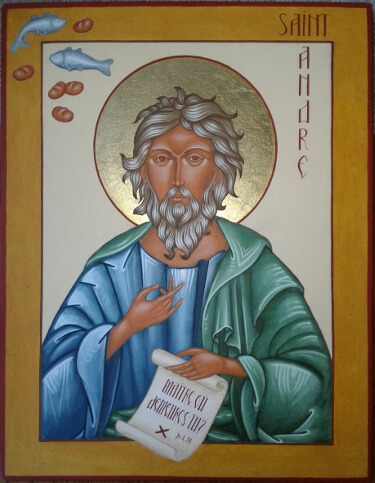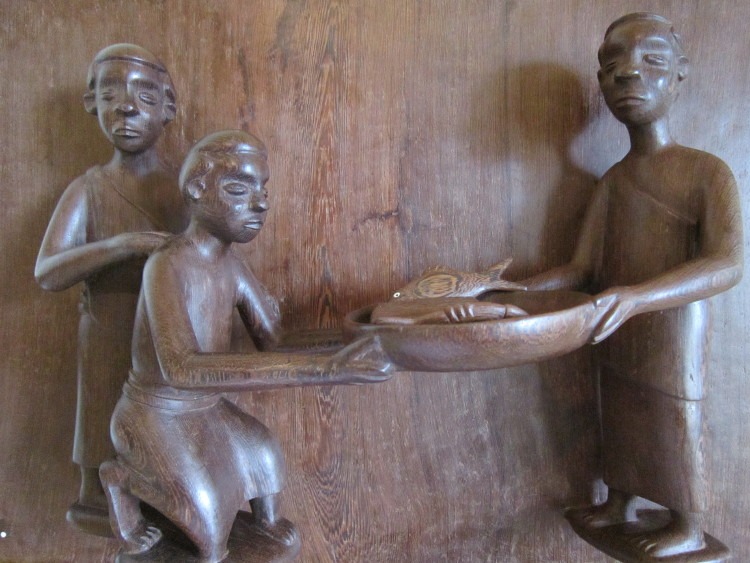Saint Andrew
Saint Andrew the Apostle
The Gospels speak of him as being one of the two disciples of John the Baptist who follow Jesus from the beginning (John 1:35–29).
Andrew was born in Bethsaida in Galilee by Lake Tiberias. He and his brother Simon were fishermen. Searching for God, he was first a disciple of the preacher John the Baptist, who would most likely have baptised him. When John the Baptist points to Jesus saying: “ Behold the Lamb of God who takes away the sin of the world” (John 1:29–40) he follows him and stays with him till the end. He is one of the first disciples called by Jesus.


Andrew often acts as an intermediary. He brings his brother Simon Peter to Jesus (John 1:39–42). In the story of the feeding of the five thousand it is he also who brings the boy with the five loaves and two fish to Jesus to feed the hungry crowd (John 6:9). He and Phillip, his friend from Bethsaida, also bring some Greeks to meet Jesus.

Saint Andrew as an intermediary
Tradition has it that after Pentecost he left to preach the Gospel on a long journey around the Black Sea coast. His journey took him to Bithynia (Turkey), Ephesus, Mesopotamia, modern day Ukraine, Thrace (between the Bosphorus and the Danube) Byzantium and finally Achaea (north Peloponnese) where he was crucified by the emperor Nero in Patras in the year 60. The cross he was put to death on was in the form of an X, which is the origin of the name of the cross of Saint Andrew.
In the 4th century his relics were transported to Constantinople but today lie in Amalfi in Italy. In the 60’s a large part of the saint’s relics and his cross were given back to the church of Greece. A large church was built in Patras to receive them.
Saint Andrew is portrayed by a cross with arms of equal length called the cross of Saint Andrew, and sometimes as the fisherman from Galilee carrying a large net containing fish.
Why sisters of “Saint Andrew”?
In the 14th century an altar in our sisters’ chapel in Tournai was dedicated to Saint Andrew as an act of special veneration. This is probably why the community gradually became known as the sisters of Saint Andrew. The gospel figure still holds a special place with us today.
